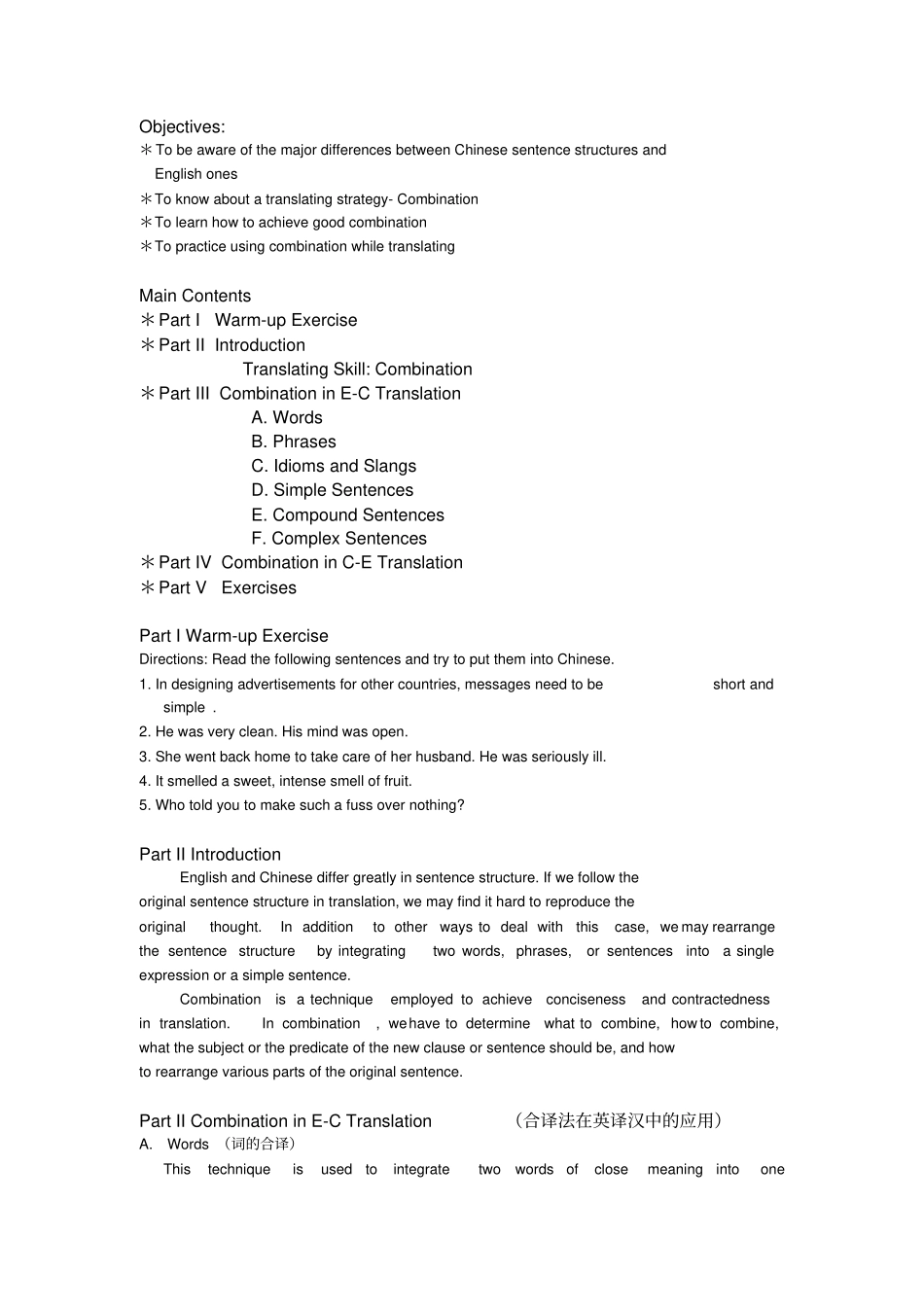Objectives:*To be aware of the major differences between Chinese sentence structures and English ones*To know about a translating strategy- Combination*To learn how to achieve good combination*To practice using combination while translatingMain Contents*Part I Warm-up Exercise*Part II IntroductionTranslating Skill: Combination*Part III Combination in E-C TranslationA. Words B. PhrasesC. Idioms and SlangsD. Simple Sentences E. Compound SentencesF. Complex Sentences*Part IV Combination in C-E Translation*Part V ExercisesPart I Warm-up ExerciseDirections: Read the following sentences and try to put them into Chinese.1. In designing advertisements for other countries, messages need to be short and simple .2. He was very clean. His mind was open.3. She went back home to take care of her husband. He was seriously ill.4. It smelled a sweet, intense smell of fruit.5. Who told you to make such a fuss over nothing?Part II IntroductionEnglish and Chinese differ greatly in sentence structure. If we follow the original sentence structure in translation, we may find it hard to reproduce the original thought. In addition to other ways to deal with this case, we may rearrange the sentence structure by integrating two words, phrases, or sentences into a single expression or a simple sentence.Combination is a technique employed to achieve conciseness and contractedness in translation. In combination , we have to determine what to combine, how to combine, what the subject or the predicate of the new clause or sentence should be, and how to rearrange various parts of the original sentence. Part II Combination in E-C Translation (合译法在英译汉中的应用)A.Words (词的合译)This technique is used to integrate two words of cl...


